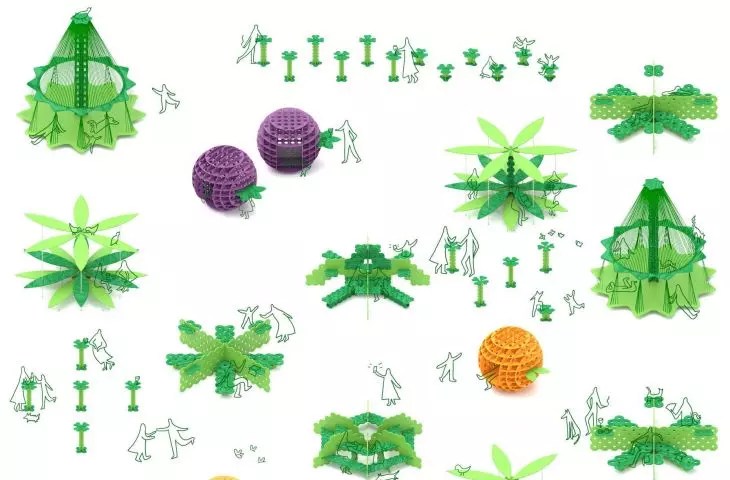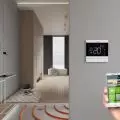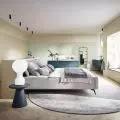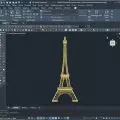In the first week of September (1-6.09), Logroño, a city in the province of La Rioja in northern Spain, will host the Concéntrico International Festival of Architecture and Design for the eighth time. Since 2015, the event has been proving that sometimes small, thoughtful gestures are enough to completely transform an urban space. During the festival, the city is filled with exhibitions and installations, allowing event participants and residents to rediscover or take a different look at the places they pass every day.
Polish artists Jakub Szczęsny (Concéntrico 05), Iza Rutkowska (Concéntrico 06) and Aleksandra Wasilkowska (Concéntrico 07) have also participated in past editions of the festival, whose organizers aim to give participants the tools to better understand the city and draw attention to the usefulness of architecture and design in everyday life.
During this year's event, Agata Wozniczka and Mateusz Adamczyk of the BUDCUD studio will present their concept of creative interference in the urban fabric. The architect duo has designed a set of unusual urban furniture - Urban Planters, whose task is to restore (though not literally) greenery to the long-paved square in the center of the historic part of the city - Plaza del Mercado. And so come September, you'll be able to have a picnic at the Shrub, sit under the Palm, hide in the shade of the Pine, hide in the Grape or romance at the Four Leaf Clover.



BudCud studio proposal rediscovers Plaza del Mercado in Logroño
© BudCud
About the Spanish festival, urban squares
and about the Urban Saplings project, are told by
Agata Wozniczka and Mateusz Adamczyk of the BudCud studio.
Ola Kloc: This is the 8th edition of the Concéntrico festival. Each time during this event, the streets of Logroño, Spain, are filled with urban installations, encouraging residents and festival participants to rediscover familiar spaces. How does your proposal fit into this urban context?
BudCud: Successive editions of the Concéntrico festival encourage people to rediscover the city. Temporary installations draw attention to what defines public space - for example, the varying proportions of city squares or the potential of the shopping street as a meeting place, complementing Logroño with temporary forms that break city users out of their routine.
In a way, our proposal also reinvents the Plaza del Mercado - prompting us to reflect on the place's past and the lessons we can read in it. The plaza in Logroño in the past was full of trees and shrubs, organized into quarters. However - as in many other public spaces in Europe - the existing greenery was removed in the belief that the plaza should be finished with a hard surface in order to highlight the architecture and ensure "multifunctionality" and "public accessibility."



Palm tree, shaded table
© BudCud
In our opinion, greenery in a public square space is of great value - it provides shade and a more comfortable microclimate, a democratic meeting place, and supports the building of urban biodiversity. However, due to the temporary nature of our installation, we decided not to introduce live greenery into the project space - this would be wasteful. Therefore, Urban Planters, inspired by the Logroño biotope, explores some of these functions of greenery, writing their forms in pop language - clear and easy to read. Our installation is multifunctional urban furniture that reminds us what we have lost by removing greenery from public space.
{Image@url=https://cdn.architekturaibiznes.pl/upload/galerie/79001/images/original/259cedc4e31e05c51d4aa6e47c618f4d.jpg,alt=Krzak, picnic bench,title=Bush, picnic bench}
Bush, picnic bench
© BudCud
Ola: So what will the Urban Planters be made of?
BudCud: The furniture will be made of eco-friendly and biodegradable materials - locally produced and processed wood and plywood. We want Urban Saplings to travel to more squares worth restoring greenery to, so we are currently fine-tuning the finishing details for the durability and ease of use of the furniture.



Grape from the Rioja region
© BudCud
Ola: Could your proposed forms, at least in part, answer the problem of concretization of squares and markets in Poland? For example, as prototyping elements, allowing users of a given space to become accustomed to potential changes and see the need for greenery?
BudCud: We think so. We hope to bring the Saplings to Poland and arrange them in squares that lack urban greenery. The installation of Urban Saplings can raise awareness of what common space is, and what public functions greenery provides. Rearranging the abundant empty squares with multifunctional furniture would allow (even temporarily) to compact the scale of the place and create smaller urban interiors, facilitating relationships between users. The Four-Leaf Clover table enshrines just this aspiration of interaction - one can play cards, drink wine or simply flirt at the table.
{Image@url=https://cdn.architekturaibiznes.pl/upload/galerie/79004/images/original/1b485ad3418629797e35a673a49fbb3a.jpg,alt=Czterolistna Clover, table,title=Four-Leaf Clover, table}
Four-leaf Clover, table
© BudCud
We had already developed two families of urban furniture, which were our answer to the problem of the concreteness of Polish markets. Within one of them, we designed a seat with an integrated umbrella on which plants suitable for planting in urban pots could climb. The steel structure overgrown with greenery would give shade to users, while building a distinct green silhouette in the space of a street or square. Unfortunately, the implementation of umbrella-pergolas was abandoned - and it is these elements that would have provided the greatest benefit from the pots.



urban furniture, Nowa Towarowa
© BudCud
Ola: Thank you for the interview.







































